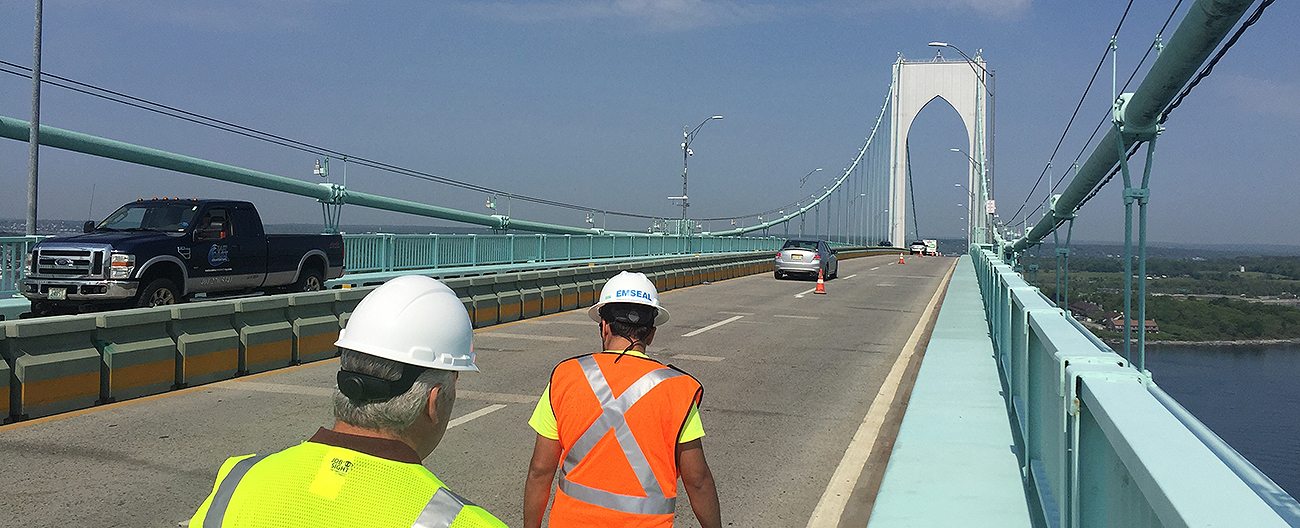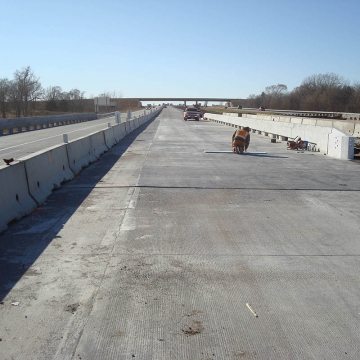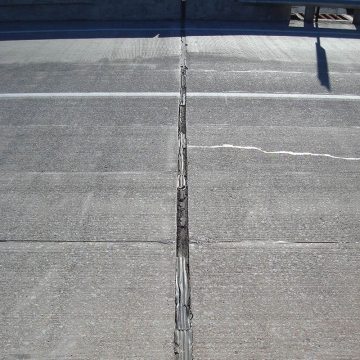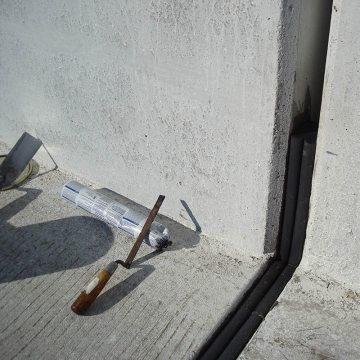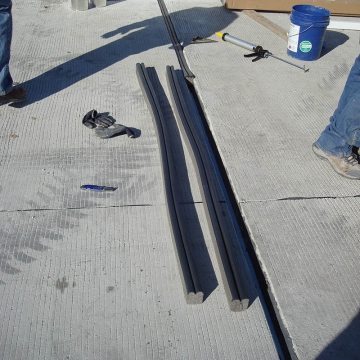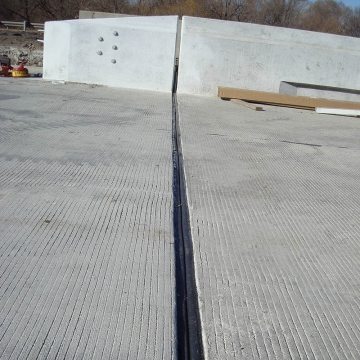New Bridge Expansion Joint Sealed with BEJS
Bridge deck to parapet joint sealed with installation of factory-fabricated Universal 90 in EMSEAL BEJS. Note that the exposed foam at the top of the U-90 has been sealed with the field application of low-modulus silicone supplied with the joint material.
EMSEAL’s BEJS is a precompressed sealant. In this respect it is very different from the lightweight, closed-cell, EVA foams or rubber compression seals that have been tried for years in bridge expansion joint applications.
Unlike these dated technologies, BEJS does not need to be force-compressed into the joint using poles or “pogo-stick” tools.
Instead, when removed from its packaging is self-expands. The rate of expansion is faster on hot days and slower on cool days. This installation took place on a cool day, so several lengths of material were removed from their packaging and allowed to expand slowly to their optimal installation width.
The completed BEJS installation is ready for traffic.



